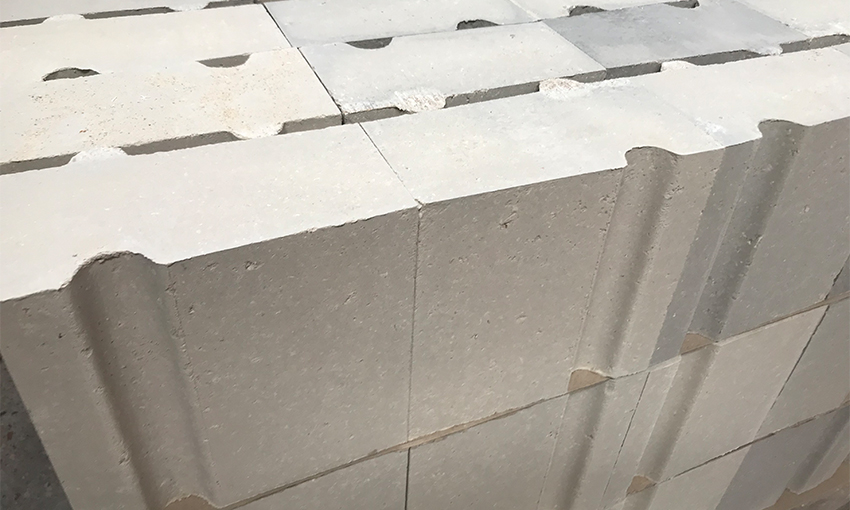Special high strength wear resistant phosphate combined with high alumina brick referred to as special phosphorus brick, is made of heat treated non burnt refractory brick with high quality wear resistance.

Special phosphorus brick is made of dense special grade or first grade high alumina bauxite clinker, and the phosphoric acid solution or aluminum phosphate solution is used as a binder. After semi-dry press molding, it is heat-treated at 400~600℃ to make chemistry. Combine refractory products. It belongs to the non burning refractory brick.
Rongsheng refractory material in order to avoid the shrinkage of the product during high temperature use, the heating generally needs to introduce heating and expanding raw refractory materials, such as kyanite, sillimanite, pyrophyllite, silica ,etc.
Compared with ceramic fired high alumina bricks, special phosphate refractory bricks have better flaking resistance, but their load softening temperature is lower and corrosion resistance is poor. Therefore, a small amount of fused corundum and mullite should be added,to strengthen the matrix.
Phosphate refractory brick is a phosphate solution with a concentration of 42.5%~50% as a binder, and the aggregate is a bauxite clinker calcined at a temperature above 1600℃ in a rotary kiln. During the use of the brick, the phosphoric acid and the brick-fired bauxite fine powder react with the refractory clay to form a binder mainly composed of cristobalite type orthophosphate. The wear resistant brick is made up of industrial phosphoric acid and industrial aluminum hydroxide with aluminum phosphate solution as a binder. The molar ratio is A1203: r'205=1:3.2, and the aggregate used is the same as the phosphate brick. In the use of refractory bricks, like the phosphate, a crust-type aluminum orthophosphate-based binder is formed.
Phosphate combined with high alumina bricks have high thermal strength, good thermal shock resistance, strong wear resistance and easy kiln skin. Some cement plants use it in the firing zone and transition zone of small rotary kiln, which shows better performance when starting and stopping the kiln frequently during the commissioning phase.
In the past ten years, many researches have been carried out to improve the softness index of phosphoric acid bricks around the basic process of phosphoric acid combination, such as increasing the amount of clay added in the ingredients or adding silicon micropowder to balance the deficiency of AlPO4 crystal form conversion. In the ingredients, kyanite, sillimanite and zircon are introduced to increase the softening temperature of the load (high-load soft phosphoric acid brick); adding Guangxi white mud to phosphoric acid, adjusting it into mud, using mud as a binder, can not idle,and can increase the load softening temperature, these technical measures are effective.The difference between two phosphate refractory bricks
Phosphate high alumina bricks mainly seek to improve the thermal shock resistance, corrosion resistance and load softening temperature of refractory materials; phosphate combined wear resistant bricks mainly seek to improve the strength and wear resistance of refractory materials.
Rongsheng refractory special phosphate refractory brick (special phosphorus brick) is suitable for cement kiln, electric furnace roof and ladle. Phosphate high alumina brick produced by Rongsheng Refractory is made of high quality high alumina bauxite, combined with dihydrogen phosphate and dried in a drying oven. Phosphate high alumina bricks are mainly used in dry cement production kiln, rotary kiln, phosphorus chemical kiln, etc. Phosphate high alumina bricks have high refractoriness, good wear resistance and high strength.


